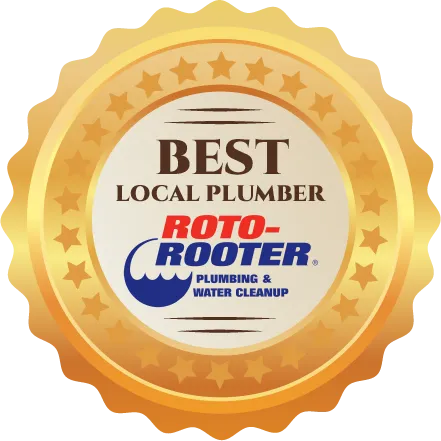Top DIY Clogged Drain Fixes Loved by St George Locals
Dealing with a clogged drain can be a real headache, especially in St. George where the dry climate and mineral-rich water can contribute to buildup in pipes. Fortunately, locals have uncovered some effective DIY methods that can help tackle these pesky blockages without the need for professional help.
One popular technique is the classic baking soda and vinegar remedy. This method is particularly useful in addressing minor clogs, as the natural reaction between these two ingredients can help break down debris and clear your pipes. Additionally, St. George residents often rely on handy tools like pipe cleaners or drain snakes, which are effective for removing hair and other stubborn obstructions that accumulate over time.
If you’re facing a more challenging blockage, a mixture of hot water and dish soap can help loosen grease and grime, making it easier to flush away. These locally favored methods not only save time but also prevent the hassle of calling in a plumber. Ready to keep your drains flowing smoothly? Let’s dive into these tried-and-true techniques that have become staples in the homes of St. George residents.
Baking Soda and Vinegar Method
If you’re facing a stubborn clog in your kitchen or bathroom drain, particularly common in areas with high mineral content in the water, the baking soda and vinegar method is a simple yet effective solution.
Start by pouring about half a cup of baking soda down the drain. Make sure it goes directly into the pipe to avoid lingering in the sink. Next, follow it with half a cup of vinegar. You’ll notice some fizzing as this reaction helps break down the clog.
Cover the drain with a plug or a cloth to keep the reaction concentrated. After about 30 minutes, flush the drain with hot water.
This method works wonders for grease, soap scum, and minor blockages, which are frequent challenges in households with older plumbing systems. It’s eco-friendly and easy, so don’t hesitate to give it a try the next time you encounter a drain issue!
Boiling Water Technique
One effective way to tackle a clogged drain is by using the boiling water technique. This method is simple but often overlooked. Here’s how you can do it:
- Boil a pot of water on your stove.
- Carefully pour the boiling water directly into the clogged drain.
- Wait a few minutes to let the heat break down the blockage.
- Flush the drain with hot water again to clear any remaining debris.
- Repeat if necessary for stubborn clogs.
This technique works well for grease, soap scum, and other minor blockages commonly found in homes.
In areas where hard water is prevalent, mineral buildup can also contribute to clogs, making this method particularly useful.
Just be cautious when handling boiling water to avoid burns. If the clog persists, consider trying another method or calling a local professional for help.
Salt and Baking Soda Mixture
A powerful combination for clearing clogged drains that many residents in urban areas can benefit from involves using salt and baking soda. In densely populated neighborhoods where old plumbing systems are common, clogs can become a frequent nuisance.
Start by pouring half a cup of baking soda directly down the drain. Follow that with half a cup of salt. These two ingredients create a chemical reaction that can break down stubborn clogs often caused by grease and food debris, which are prevalent in households with busy kitchens.
After adding them, let the mixture sit for about 30 minutes to allow it to work its magic on those tough clogs. Then, flush the drain with hot water, preferably boiling, to wash away any debris that may have been dislodged.
This simple yet effective method can help clear minor blockages and keep your drains flowing smoothly, especially in areas where heavy rainfall can exacerbate drainage issues.
Plunger Power
When faced with a stubborn clog, grabbing a plunger can be your best bet for a quick fix. This trusty tool creates the suction needed to dislodge debris and restore flow. Here’s how to maximize your plunging efforts, especially considering local plumbing challenges:
- Choose the Right Plunger: In many homes, using a cup plunger works well for sinks, while a flange plunger is essential for toilets, especially those with low-flow designs common in many areas.
- Ensure a Good Seal: It’s crucial to fully cover the drain with the plunger to create effective suction. Local plumbing systems may have unique shapes that require a bit of adjusting to get the right seal.
- Use Steady Force: Push down gently and then pull up sharply to generate a strong vacuum effect. In some neighborhoods, older pipes may require a softer touch to avoid damage.
- Repeat if Necessary: Don’t hesitate to plunge multiple times if the clog persists. Some localities experience more frequent clogs due to tree roots or older plumbing infrastructure.
- Check for Success: After a few plunges, run water to see if it drains properly. If you notice water backing up, it might indicate a deeper issue that requires professional attention.
With these tips, you’ll tackle clogs like a pro and navigate the unique plumbing challenges of your area!
Wet/Dry Vacuum Approach
If plunging doesn’t do the trick, consider pulling out a wet/dry vacuum as another effective solution for unclogging drains. This versatile tool can suction out debris that’s causing the blockage, which is especially useful in areas prone to heavy rainfall where leaves and mud can accumulate in drains.
First, ensure your vacuum is set to the liquid setting. Then, create a tight seal around the drain with the vacuum hose. Turn it on and let it work its magic, sucking out the clog. If the first attempt doesn’t clear the drain, repeat the process a couple more times.
Be cautious with wet materials, as they can damage regular vacuums. A wet/dry vacuum not only clears clogs but also helps prevent future issues, making it a valuable addition to your DIY toolkit, particularly in regions where drain maintenance is vital due to seasonal weather changes.
Dish Soap and Hot Water Solution
In many households, a simple mixture of dish soap and hot water can work wonders for clearing a clogged drain, especially in areas prone to hard water or high grease accumulation. This method is particularly effective for minor clogs caused by grease or soap buildup, which can be common in kitchens following heavy cooking.
Here’s how to do it:
- Boil about 2 cups of water.
- Add a generous squirt of dish soap to the water.
- Carefully pour the soapy water down the clogged drain.
- Allow it to sit for 10-15 minutes.
- Rinse the drain with hot tap water.
This combination helps break down grease and can assist in flushing away debris that tends to accumulate over time.
In regions where older plumbing systems are prevalent, you may find that clogs are more frequent, making this quick and easy solution a valuable first step. If your drain remains sluggish after trying this method, you might need to consider a more robust solution.
However, often this simple fix can save you time and frustration, especially during busy days when you need your kitchen functioning smoothly!
Snake Tool for Deep Clogs
While the dish soap and hot water solution is effective for minor clogs, deeper blockages that are common in older homes or properties with tree roots nearby may require a more hands-on approach.
A snake tool, also known as a plumbing auger, is ideal for tackling these stubborn issues. Begin by inserting the snake into the drain, twisting and pushing it further until you encounter the clog. Once you feel resistance, rotate the handle to break up or latch onto the blockage.
Carefully pull the snake out, bringing debris with it. Afterward, allow hot water to flow down the drain to flush away any remaining bits.
Utilizing a snake can help you avoid expensive repairs and ensure that your pipes remain clear and functional. It’s a practical tool that every homeowner should consider having on hand, especially in regions where plumbing issues are more prevalent.
Essential Oils for Freshness
Essential oils can be a powerful ally in keeping your drains smelling fresh and clean, especially in regions where humidity can lead to musty odors. By adding a few drops of your favorite oils, you can combat unpleasant smells and create a welcoming atmosphere in your home.
Here are some essential oils you might want to try:
- Tea Tree Oil: Known for its antimicrobial properties, it helps eliminate bacteria that thrive in damp environments common in certain areas.
- Lemon Oil: Its fresh scent masks bad odors and provides a zesty aroma that can brighten up spaces often affected by stale air.
- Peppermint Oil: This invigorating scent energizes your space while revitalizing drains, making it a great option in regions where allergens can build up.
- Lavender Oil: Adds a calming fragrance and has antibacterial qualities, perfect for areas with high foot traffic and potential odors.
- Eucalyptus Oil: Offers a rejuvenating scent and can help clear congestion in pipes, particularly useful in places where plumbing issues are more frequent.
Regularly using these oils can keep your drains not just clean but also fragrant, making your home feel more inviting despite local challenges.
Pipe Cleaners for Hair Clogs
Keeping your drains smelling fresh is one thing, but tackling the root of clogs is another, especially in areas with high humidity where hair clogs can be more prevalent.
If you’re struggling with hair clogs, pipe cleaners can be a game changer. Grab a standard pipe cleaner or a specialized drain cleaning tool designed for this purpose. Simply insert the cleaner into the drain, twisting and turning as you go. The bristles will effectively grab onto hair and debris, pulling it out.
It’s a straightforward and efficient way to clear out stubborn blockages without resorting to harsh chemicals. After you’ve removed the gunk, run hot water down the drain to flush away any loose particles.
This quick fix will keep your drains flowing smoothly, making daily life a bit easier in the face of local plumbing challenges.
Regular Maintenance Tips
To prevent clogs from becoming a recurring nightmare, regular maintenance is essential. In our region, where heavy rain can lead to increased debris in drainage systems, staying proactive is crucial to keep your drains flowing smoothly.
Here are some simple tips to help you maintain your drains effectively:
- Use a drain strainer: With the abundance of leaves and sediment during the rainy season, a strainer can catch hair and debris before they enter the pipes.
- Flush with hot water: Given the tendency for grease buildup from local cooking habits, pouring boiling water down your drains weekly can help dissolve stubborn grease.
- Baking soda and vinegar: Treating your drains monthly with this combination can effectively break down the buildup that often occurs in our region’s plumbing systems.
- Avoid chemical cleaners: Many of the harsh chemicals can damage your pipes over time; opting for natural solutions is a safer choice for maintaining the integrity of your plumbing.
- Schedule regular inspections: Consider having a plumber check your plumbing for leaks or weaknesses, especially before the rainy season, to catch potential problems early.
Conclusion
By trying out these DIY clogged drain fixes, you can tackle stubborn blockages like a pro, especially in St George where local challenges like sandy soil and hard water can contribute to drain issues. Whether you choose the fizzing reaction of baking soda and vinegar or the power of boiling water, you’ve got plenty of effective options tailored to the unique conditions here. Don’t forget to keep up with regular maintenance, such as ensuring that debris from landscaping doesn’t find its way into your drains, to prevent future problems. With these tips in your toolkit, you’ll keep your drains flowing smoothly and avoid the hassle of calling a plumber. Happy unclogging!
Tags






